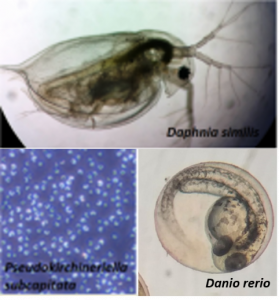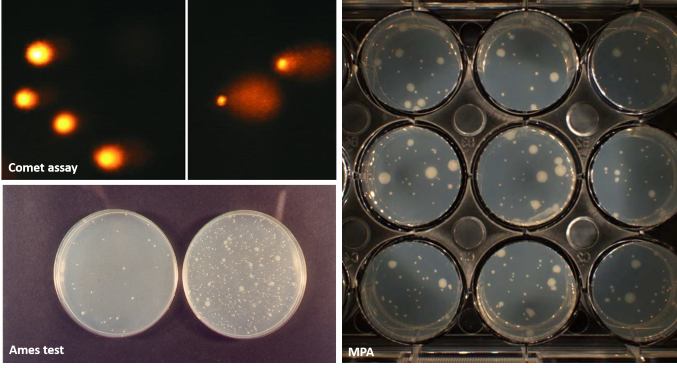The LAEG conducts research on the areas of ecotoxicological risk assessment of substances including dyes, nanomaterial and pesticides. Also develops new protocols for acute and chronic toxicity with aquatic organisms and genotoxicity tests. The staff includes specialized technicians and the laboratory has a laboratory quality program implemented.
We participate in international projects like NORMAN NETWORK and SOLUTIONS and have strong collaborations with several laboratories and universities from Brazil s (LQA-UNICAMP, UNIFESP-Diadema, FCF-USP SP) and from other countries (UFZ, Heriot-Watt, College of Textiles-NCSU, KAROLINSKA INSTITUTE, LENHA-UNIVERSITÉ DE LYON)
We perform several toxicity tests with freshwater and marine organisms and mutagenicity assays:
Freshwater organisms
- Acute and chronic toxicity tests with Daphnia similis
- Chronic test with com Raphidocelis subcapitata
- Acute toxicity test with Danio rerio (OECD 236, 212)

Marine Organisms
- Acute toxicity test with the amphipod Parhyale hawaiensis

Testes de Genotoxicidade
- Salmonella/microsome (Ames test)
- Miniaturized Salmonella/microsome (microplate agar, MPA)
- Comet assay / Micronucleus

